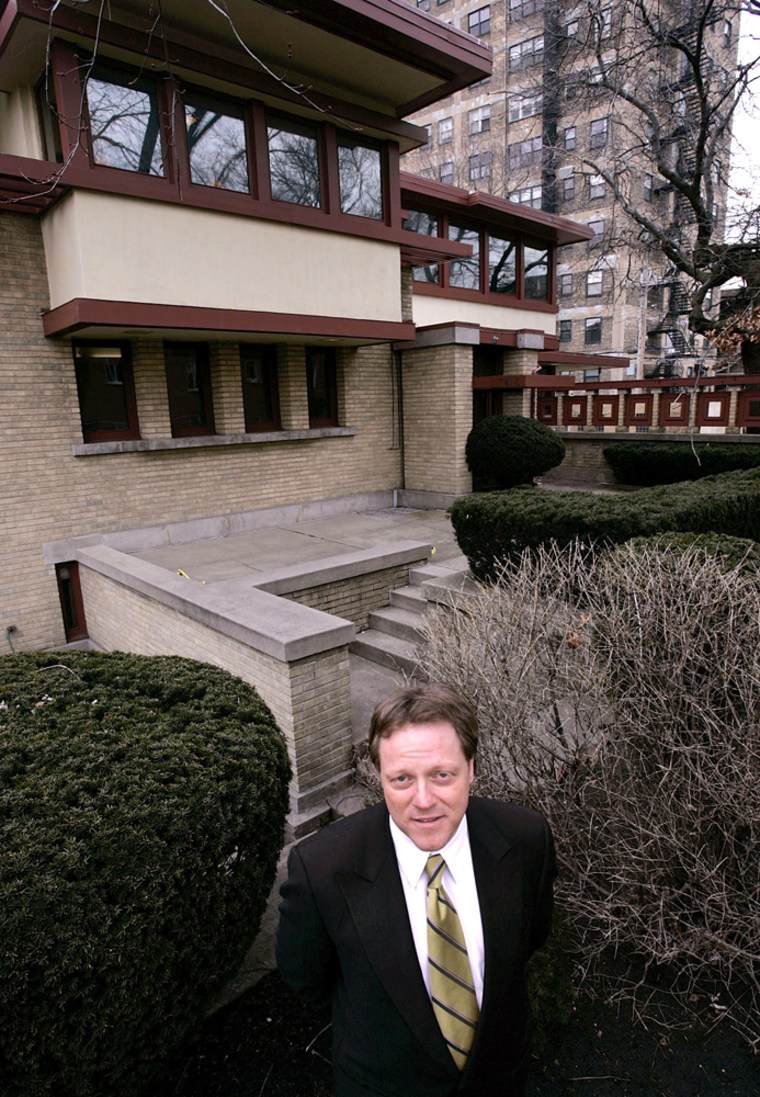If you think selling a house designed by the most famous architect in American history is easy, think again.
After several months on the market, a 1915 Frank Lloyd Wright house on Chicago’s North Side is going on the auction block, with bids starting at $750,000 — less than a third of the original $2.5 million asking price.
A few years ago, another Wright house sold at auction in Cincinnati for only about $400,000.
“There was always a relatively small market for them,” said Ronald Scherubel, executive director of the Frank Lloyd Wright Building Conservancy. “Even when he (Wright) was alive they weren’t for everybody.”
But the hard sell on Wright houses runs deeper than their historical lack of appeal.
Permission needed to remodel, paint
First, owners often can’t remodel or even paint the homes without permission from some government official.
Chicago designated the four-bedroom Emil Bach House a landmark in 1977, so both the city and the Landmarks Preservation Council of Illinois must now sign off an any substantial changes, Scherubel said.
“That house is really intended to stay that house,” said Frank Diliberto, senior vice president of Inland Real Estate Auction, which is handling the March 8 sale.
Then, there’s the way Wright laid out his Prairie-style homes and their size — usually on the small side.
Unlike modern houses, with their roomy kitchens and bedrooms, Wright built homes with spacious living rooms and dining areas. Kitchens were simply places to prepare food and bedrooms were just for sleeping, Scherubel said.
“His philosophy was different,” he said.
In the Emil Bach house, the kitchen is bigger than in most Wright homes, said Inland Real Estate spokesman Darryl Cater. Still, he said, “Frank Lloyd Wright designed kitchens for servants.”
Another problem: location
Some of Wright’s early homes also have developed expensive structural problems, such as sagging roofs. Scherubel said the Emil Bach House didn’t appear to have those problems.
The biggest problem the Emil Bach House might have is its location.
When it was built, it was a country home with an unobstructed view of Lake Michigan. Today, it’s on a busy street lined with apartments and businesses in the city’s Rogers Park neighborhood.
If the home were in Oak Park, a Chicago suburb with a large concentration of Wright homes, it would have sold for about $2.1 million, said Ken Goldberg, a real estate agent who tried to sell the house for months before Inland Real Estate stepped in.
“Nobody pays that in East Rogers Park,” he said of the house. It sold two years ago for $1 million.
But Inland’s Diliberto says the neighborhood won’t dissuade people who want to own one of just 380 Wright houses in the United States. The company has heard from prospective buyers across the country.
“This,” Diliberto said, “is a chance to buy a piece of history.”
